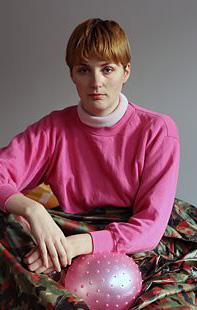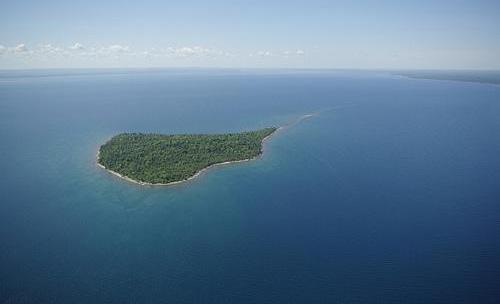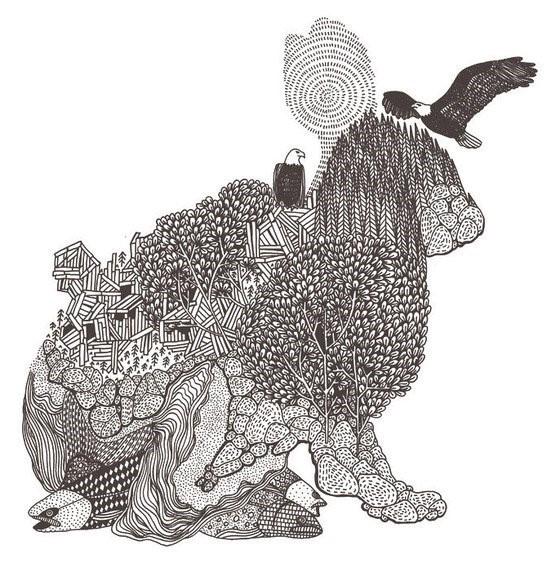Introduction
The Artists in Residence (AiR) of Goethe Institutions are all over the world and offer a variety of resources (including funds, accommodation, studios, local cultural exchanges, etc.) to reside artists and give them freedom to create. This AiR programs thus provide a temporary comfort zone for artists from abroad, but does the resources provided by the AiRs help artists to create new work? Whether to break the comfort zone is more helpful to create?
Skype Interview

Candidate: Lotte Meret
Effinger- A German artist who participated in the Goethe Institute
AiR program in Beijing
China from August 2018 to November 2018
Q:what is your comfort zone when you participate in an AiR program?
A: It is very nice to have a residence for three months in a completely unfamiliar city. but
Q: what kind of surroundings, you think, can give you inspiration?
A: I think inspiration does not depend on the surrounding, this is my responsibility. Often, I find myself in an awkward communication in a new environment but of course, this happens because I need time to get comfortable with the surroundings and myself. I believe a certain degree of openness can only happen if I am willing to question my behavior in this surrounding, I often refer in a wired situations to the circle of self-fulfilling prophecy. My behavior is determined in many parts by my perception and the meaning I ascribe to the situations where I am in. When I am able to break this cycle, so I can redefine my assumptions on the surroundings, this can be very inspirational.
Q: Do you think it would be better to work under high pressure?
A: Yes, definitely,most of my friends who are great artists put themselves on such high pressure. I think I also suffered by pressure. Because I have a high standard, which produces great work. And sometimes I
produces great work. And sometimes I realize I cannot really enjoy my work, because I always think it did not fulfill my idea. But the Goethe Institute did not put me on any pressure, they even did not set the deadline. But It is this situation that makes me more stressed.
What is the artists’ comfort zone when they participate in an AiR program?
Firstly, by definition, a comfort zone is the place where people feel comfortable, where no change happens, where everything stays the same. -No More Starving Artists1
For artists who come mostly from out of the country, AiR is their most familiar and safe place. In terms of Goethe Institute, it offers a German-language or English communication , opportunities for foreign culture and local cultural exchanges . Like the German artist (Lotte Meret Effinger) I interviewed said: 'It is uncomfortable to arrive at any new places because everything doesn't belong to you. As artists in residence live and work in a place, they slowly adapt to the unknown city by
the help and the AiR Institutes. For instance, she (Lotte Meret Effinger) even started to learn Chinese, when she participated Goethe Institute AiR in Bejing, China from Aug,2018 to Nov,2018. Most artists have their own strategies to adapt to new places and make themselves comfortable more or less based on institute’to complete their work during the residency process.
Why breaking comfort zone?
Alasdair White, the man who coined the term “comfort zone,” hypothesized that to achieve high performance, one has to experience a certain amount of stress. In order to maximize performance, however, we need a state of relative anxiety—a space where our stress levels are higher than normal. This space is called "Optimal Anxiety," and it's just outside our comfort zone2. Staying within your comfort zone can keep you away from experimenting, being inspired, broadening you creative and taking on new ventures, which is important for
For example, for the Rabbit Island4 Artist Residency, the idea is the minimalist and backto-nature artists’ retreat blossomed with an island visit by artists. Artists architects and writers are involved here to create their own living and working spaces. The organizer only provides tools and basic needs. Meanwhile the rabbit island foundation also uses the works created by the artists to promote their program.


As mentioned above, even if the artists participated in the AiR of the Goethe Institute, they changed to live in a new city. The Goethe Institute provided rich resources and did not make the artist truly being adventure. Of course, I am not saying that the Goethe Institute should put the artist at risk. But giving the resident artists a certain amount of pressure to put them in ‘Optimal Anxiety’ may lead to a win-win outcome between participants and organizer.
Usual ways to break the comfort zone
Do everyday things differently.
Take a different route to work.
Try a new operating system.
Try recalibrate your reality,Whether the change you make is large or small.
Look for the perspective that comes from any change, even if it's negative2 In summary, all the ways are to put pressure on yourself by breaking the familiar environment, forcing yourself to continuously learn and adapt to the new environment. Therefore, for AiR, by breaking the comfort
environment and the familiarity with the artist's long-term residence. It could give residents pressure which psychologically brings new adventures, even in the familiar an AiR. Conclusion
The Goethe Institute AiR program offers a platform for artists to fund and display their work, and the organizer also use the artist's work to promote themselves. It is a balanced approach. There is a contract-based partnership between artists and institutes. There is no necessary to provide a completely comfortable environment for artists during the stay.
For artists, the psychological influence on the environment give them a certain pressure and it can help them to create. As Lotte Meret Effinger said, their discomfort and stress come from both: one is a completely unfamiliar environment, and the other is the self-requirement (based on the contract they must complete their work, but there are no requirements, and institutes do not provide information if artists do not ask)
but also in the exploration of a strange place.
On the other hand, the standard of self does not bring pressure without information and requirements. It is necessary to present a work that meets self-standards in front of people, which will bring the pressure.
Therefore, based on the above two points, I am considering how the Goethe Institute AiR will bring a psychological pressure - this place has a strong sense of strangeness. I want to use the emptiness as a concept, space that brings strangeness. Meanwhile, nothing left, the space itself does not convey any information. This space will give the artists a sense of discomfort and pressure that encourage them to explore and stimulate their creation.
Source List
1 No More Starving Artist - How to Master Your Art, Your Life & Build Your Business (John Paul Fischbach, Global Publishing Group, 1 Nov 2018)
2 The Science of Breaking Out of Your Comfort Zone and Why You Should(Alan Henry, 2013)
Source:https://lifehacker.com/the-science-of-breakingout-of-your-comfort-zone-and-w-6564267054
3 Don’t be Afraid To Think Outside The Box(Elisha-Rio Apilado,2015)
Source:http://artbistro.monster.com/benefits/ articles/12020-5-wacky-ways-to-ditch-your-comfort-zone
4 Rabbit Island, also called Traverse Island, is sandstone bedrock and remains much as it was when the first mapmakers arrived in the 1800s. It has never been logged, mined, cleared for homes or subdivided.
Figure1: Rabbit Island Figure2: A Logo of Rabbit IslandArtist Helen Lovelee developed the rabbit Island design when participating this AiR